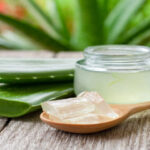In recent years, protein bars have surged in popularity, becoming a go-to snack for many. Whether you’re a fitness enthusiast looking to fuel your workouts, a busy professional needing a quick meal replacement, or simply someone who wants a nutritious snack, protein bars are a convenient option. But with so many choices out there, how do you know which one to pick? This guide will help you navigate the world of protein bars, focusing on the benefits, what to look for, and even gluten-free options for those with dietary restrictions.
What Are Protein Bars?
Protein bars are compact snacks designed to provide a quick source of protein, carbs, and fats. Originally developed for athletes, they have now become mainstream, catering to anyone who needs a quick, on-the-go snack. The primary ingredient in most protein bars is a protein source, which can range from whey and casein (both derived from milk) to plant-based proteins like pea, soy, and rice.
Benefits of Protein Bars
So, why are protein bars so popular? Here are a few reasons:
- Convenience
One of the main reasons people reach for protein bars is convenience. They are portable, easy to store, and don’t require any preparation. You can throw one in your bag and have it ready whenever hunger strikes.
- Nutritional Boost
Protein bars are designed to offer a balanced mix of macronutrients—proteins, fats, and carbohydrates. This makes them an excellent choice for a quick energy boost or post-workout recovery. The protein helps in muscle repair and growth, while the carbs replenish glycogen stores.
- Variety
With countless flavors and types available, there’s a protein bar for everyone. Whether you’re craving something sweet, savory, or even gluten-free, the market has got you covered.
What to Look for in a Protein Bar
Not all protein bars are created equal. Some are essentially glorified candy bars loaded with sugar and artificial ingredients, while others are genuinely nutritious. Here’s what you should consider when choosing a protein bar:
- Protein Content
Since protein is the star ingredient, you want to make sure you’re getting enough of it. A good protein bar should have at least 10 grams of protein. If you’re using it as a meal replacement or post-workout snack, aim for 20 grams or more.
- Sugar Levels
Be mindful of the sugar content. Some bars can have more sugar than a can of soda! Ideally, a protein bar should have no more than 5-10 grams of sugar. Look for bars sweetened with natural alternatives like stevia or monk fruit instead of high-fructose corn syrup or artificial sweeteners.
- Calorie Count
Depending on your goals, the calorie content of a protein bar can either be a pro or a con. If you’re looking for a meal replacement, you’ll want something around 300 calories or more. For a snack, aim for 150-250 calories.
- Ingredients
Less is more. Opt for bars with a short ingredient list that includes whole foods like nuts, seeds, oats, and natural sweeteners. Avoid those with a laundry list of unrecognizable ingredients, especially if they sound like they belong in a chemistry lab.
Gluten-Free Protein Bars
For those with gluten intolerance or celiac disease, finding the right protein bar can be a bit trickier. Many protein bars contain ingredients like wheat, barley, or rye, which can be harmful to those avoiding gluten. Fortunately, the market for gluten-free protein bars has expanded significantly. Here’s what to keep in mind:
- Certified Gluten-Free: Look for bars that have a gluten-free certification. This ensures that the bar meets strict standards for gluten content, typically less than 20 parts per million.
- Avoid Cross-Contamination: Even if a bar is made with gluten-free ingredients, it could be processed in a facility that handles gluten. If you’re highly sensitive to gluten, this is something to watch out for.
- Check the Labels: Always read the ingredient list carefully. Even if a bar claims to be gluten-free, there might be hidden sources of gluten like malt or barley malt.
When to Eat Protein Bars
Timing can play a significant role in how effective a protein bar is for your needs. Here are some common scenarios:
- Pre-Workout: If you need a quick boost before hitting the gym, a protein bar with a good mix of carbs and protein can provide the energy and amino acids needed to fuel your workout.
- Post-Workout: After exercising, especially after strength training, your muscles need protein to repair and grow. A protein bar with a higher protein content and moderate carbs is ideal for this purpose.
- Meal Replacement: On busy days, a protein bar can serve as a convenient meal replacement. Look for bars with a higher calorie count, substantial protein, and fiber to keep you full.
- Snack: For a mid-day pick-me-up or to curb cravings, a lower-calorie protein bar can be a healthier alternative to chips or candy.
Homemade Protein Bars
If you’re not satisfied with store-bought options or want to control exactly what goes into your snack, making your own protein bars is easier than you might think. Here’s a simple recipe:
Ingredients:
- 2 cups rolled oats
- 1 cup protein powder of your choice
- 1/2 cup nut butter (like almond or peanut butter)
- 1/4 cup honey or maple syrup
- 1/2 cup milk or dairy-free alternative
- Optional mix-ins: chocolate chips, dried fruit, nuts, seeds
Instructions:
- In a large bowl, mix the oats and protein powder.
- In a microwave-safe bowl, heat the nut butter and honey for about 30 seconds, or until warm and easy to stir.
- Add the warm nut butter mixture to the oats and protein powder, then pour in the milk. Mix until well combined. If the mixture is too dry, add more milk, one tablespoon at a time.
- Stir in any optional mix-ins.
- Press the mixture firmly into a lined baking dish and refrigerate for at least an hour.
- Once set, cut into bars and enjoy!
Conclusion
Protein bars can be a fantastic addition to your diet, whether you’re looking for a quick snack, a meal replacement, or a post-workout recovery option. By understanding what to look for and considering your dietary needs, such as opting for gluten-free protein bars if necessary, you can make informed choices that align with your health goals. Remember, while protein bars are convenient, they should complement a balanced diet rather than replace whole foods entirely. Happy snacking!










